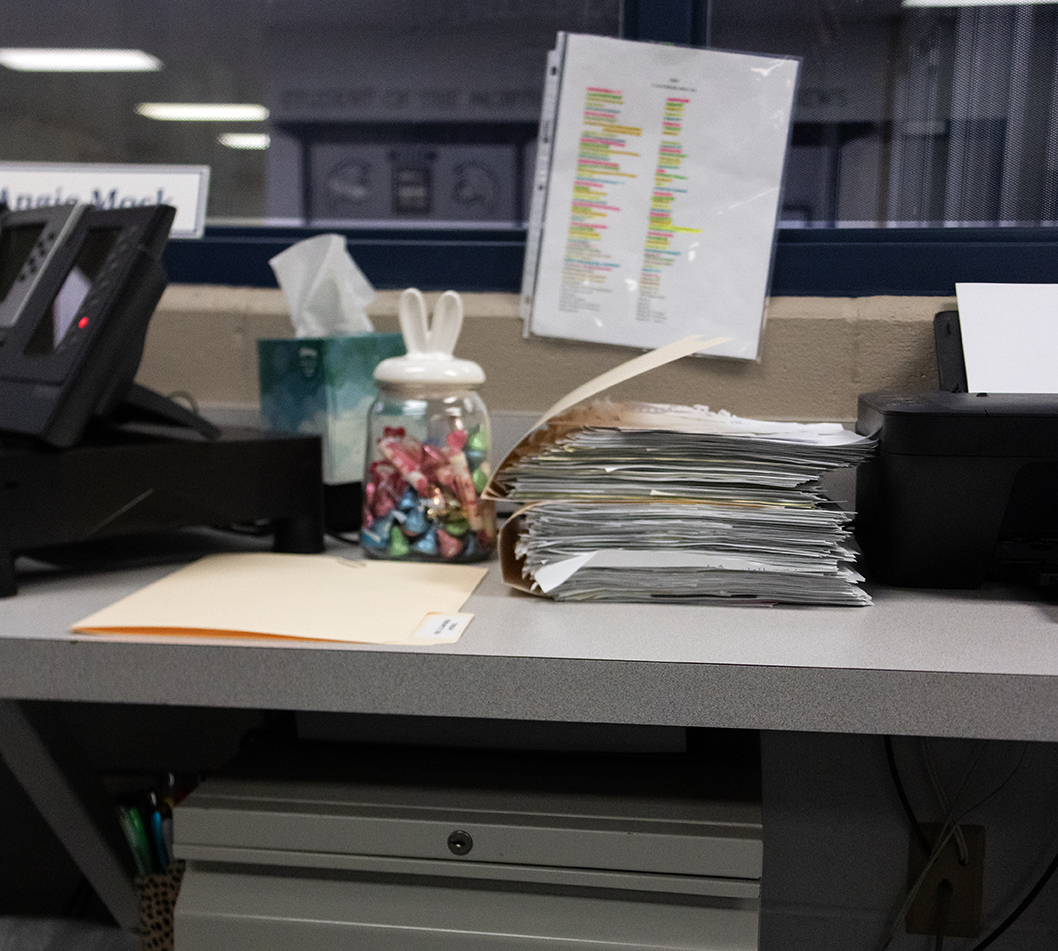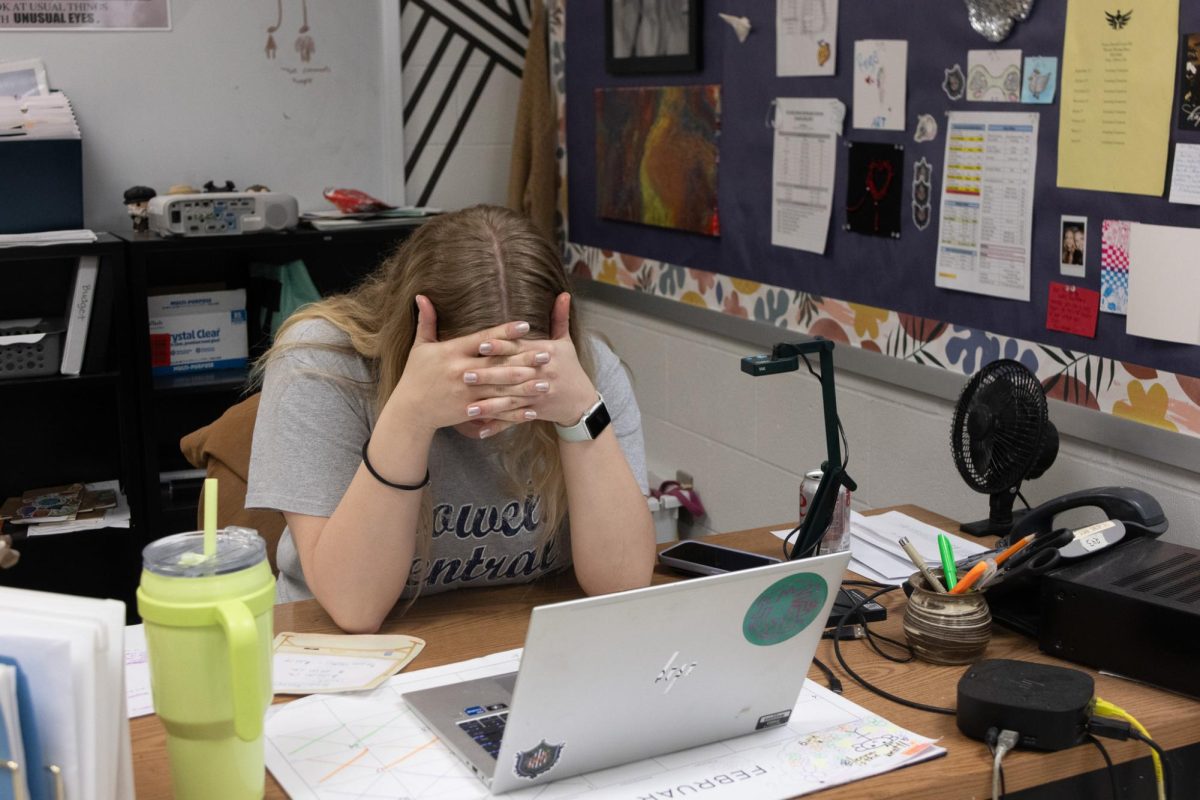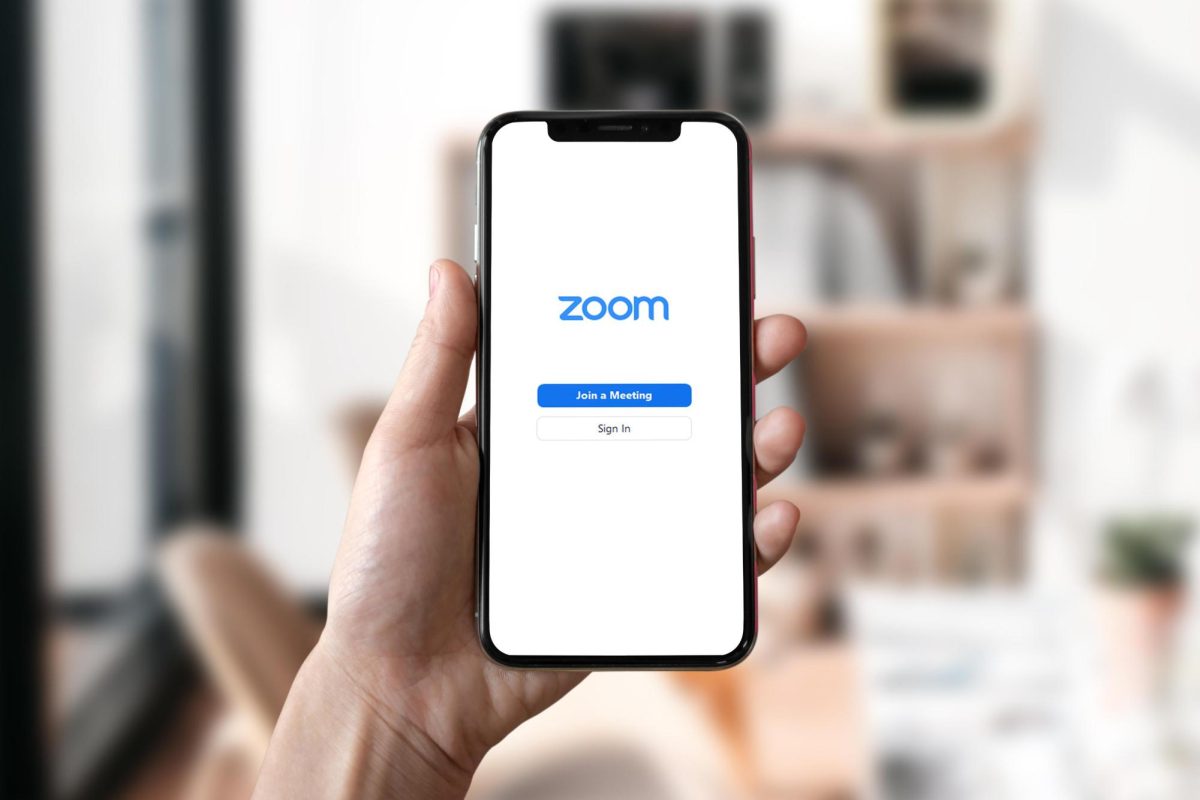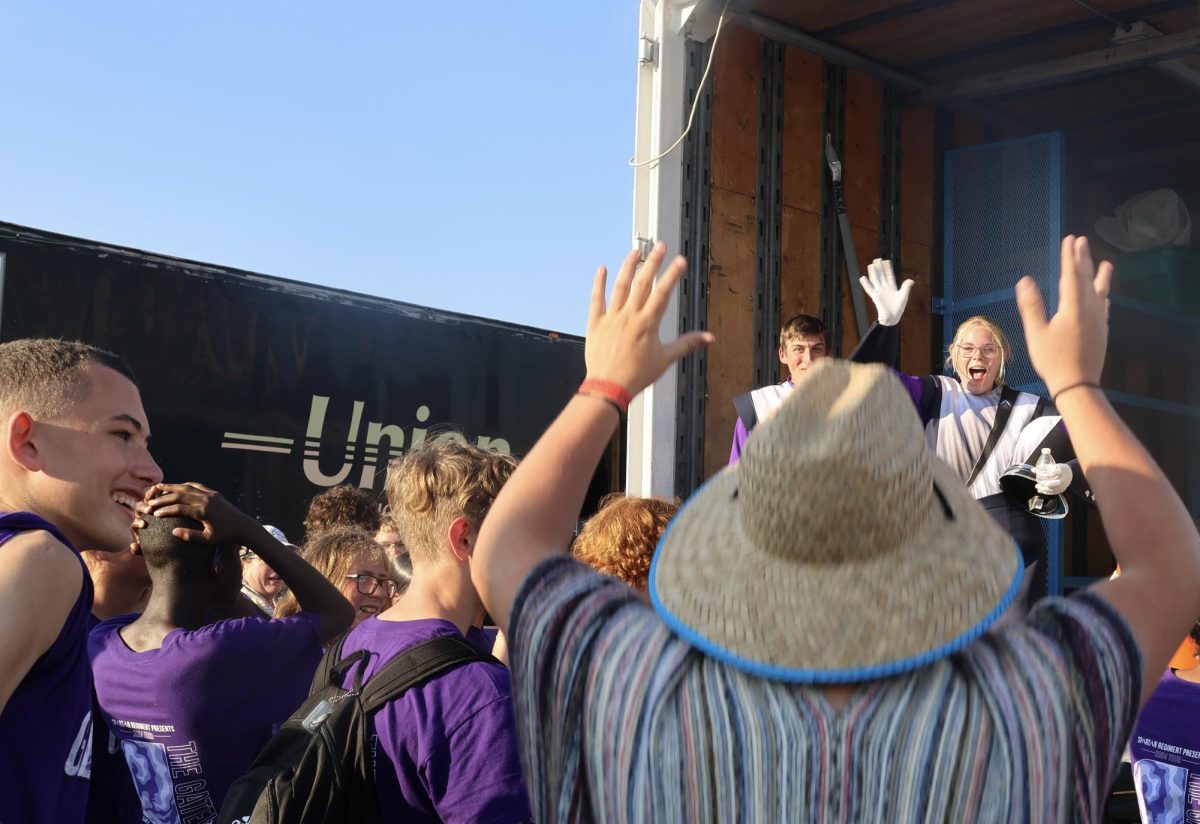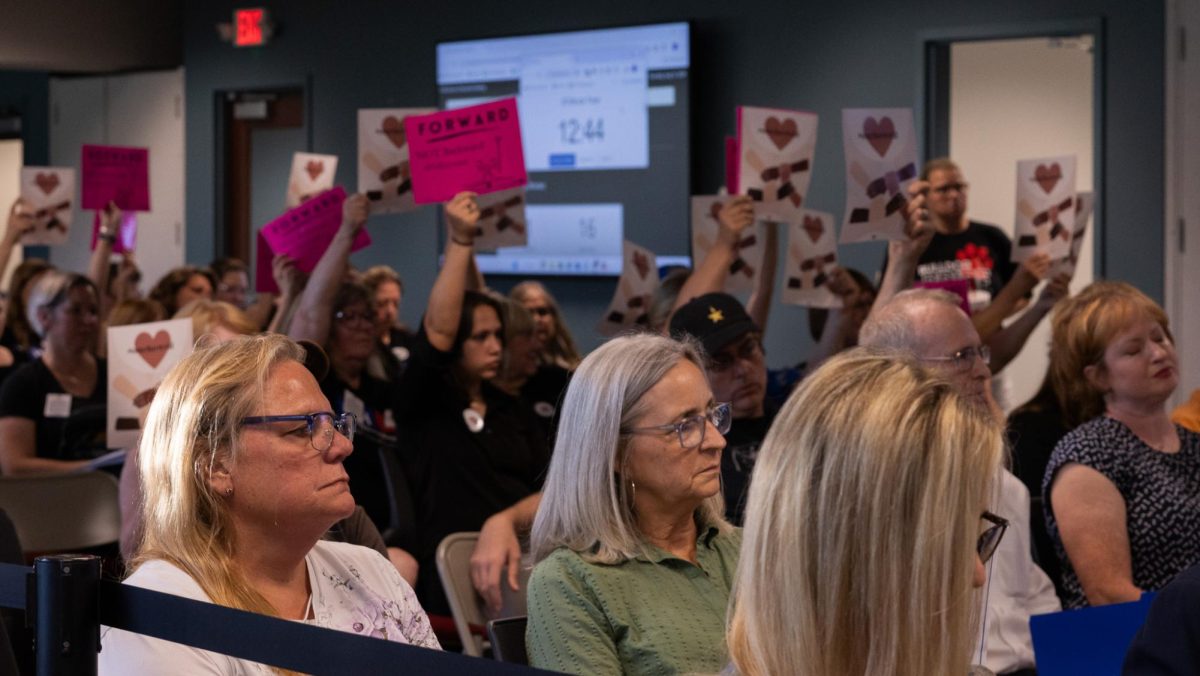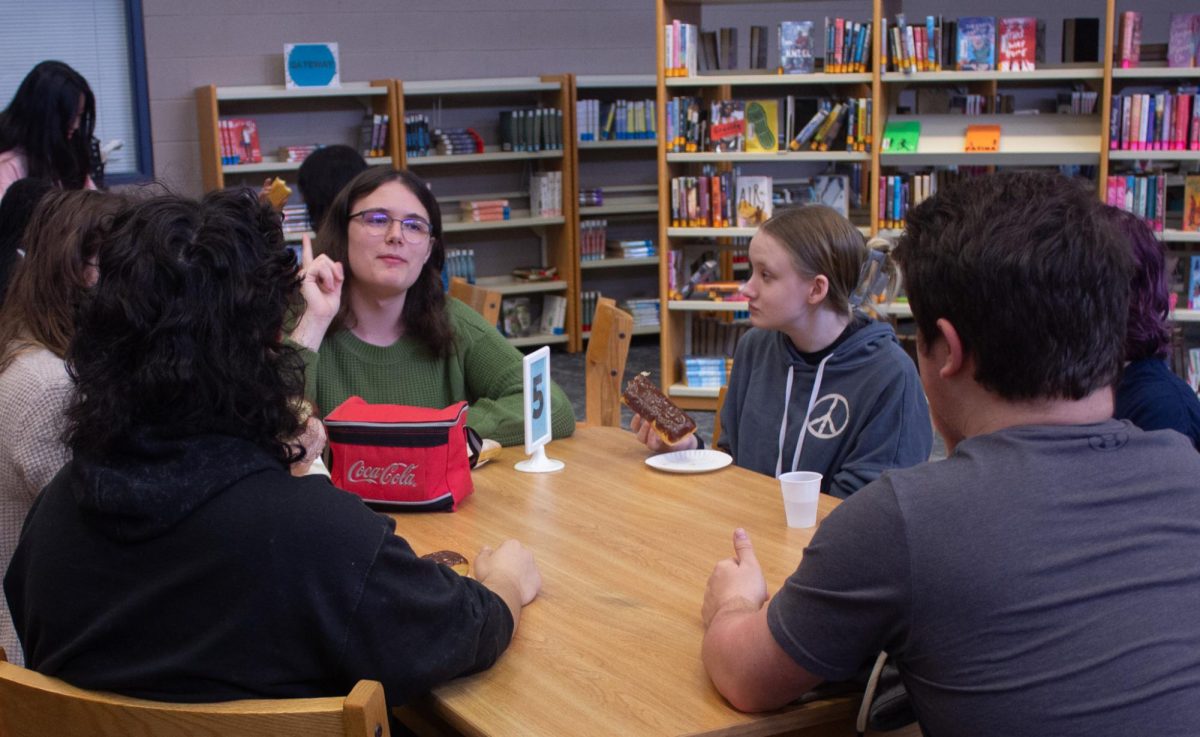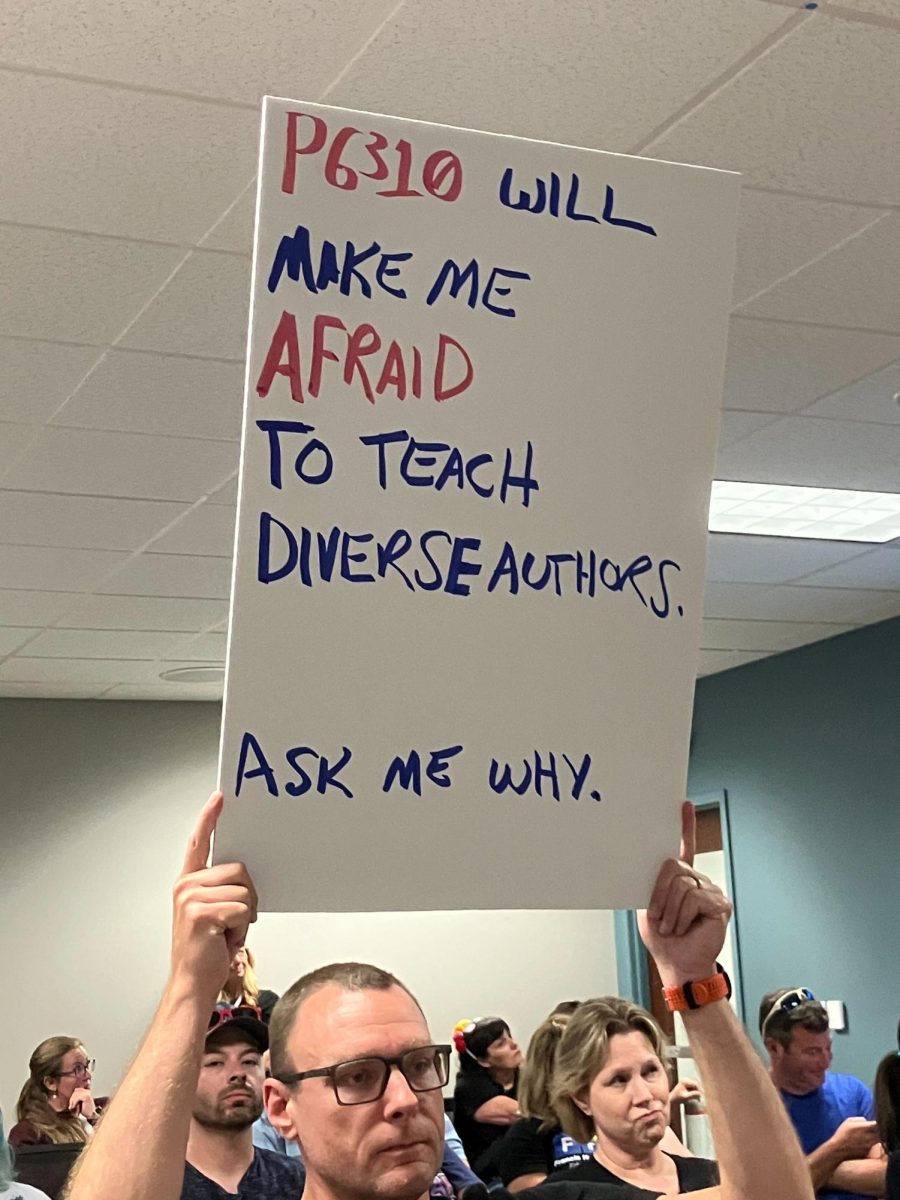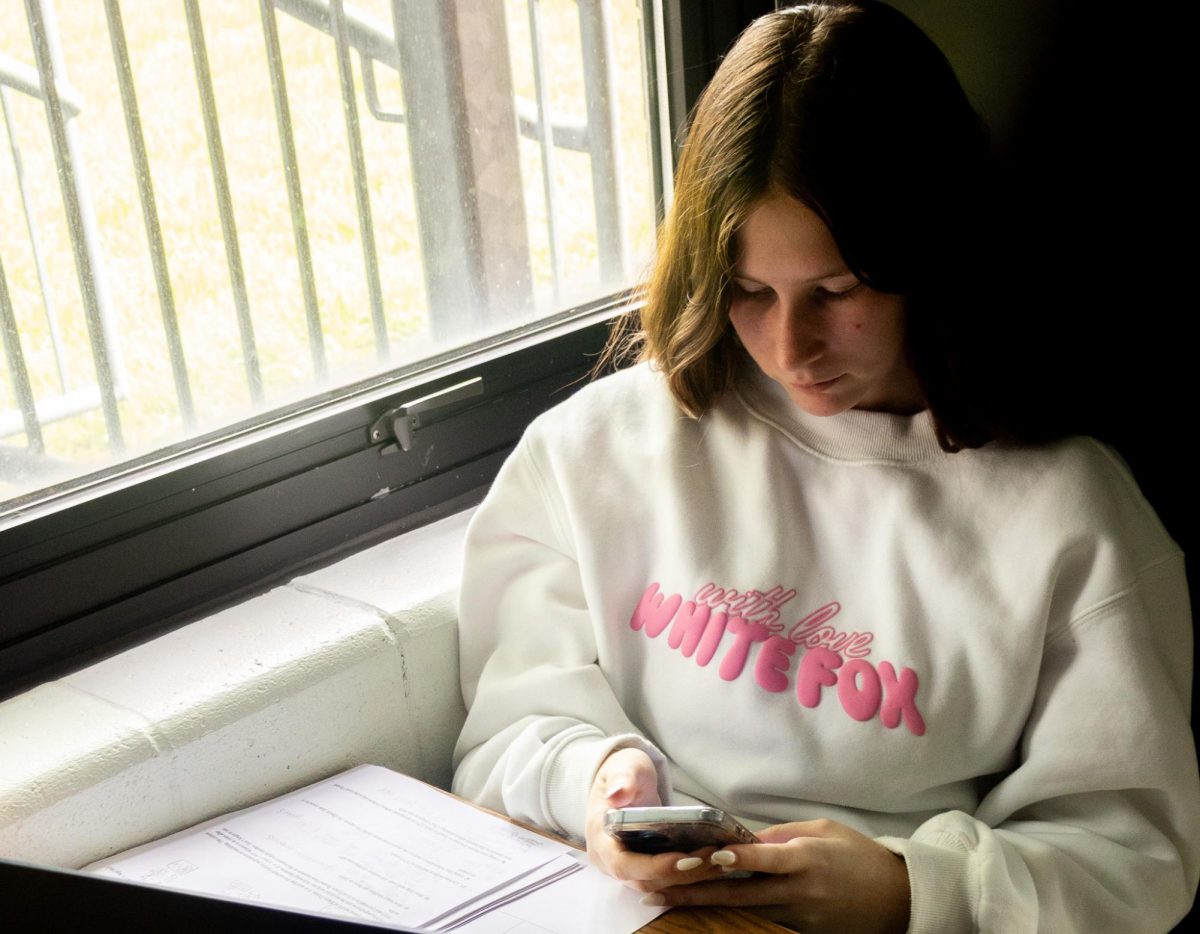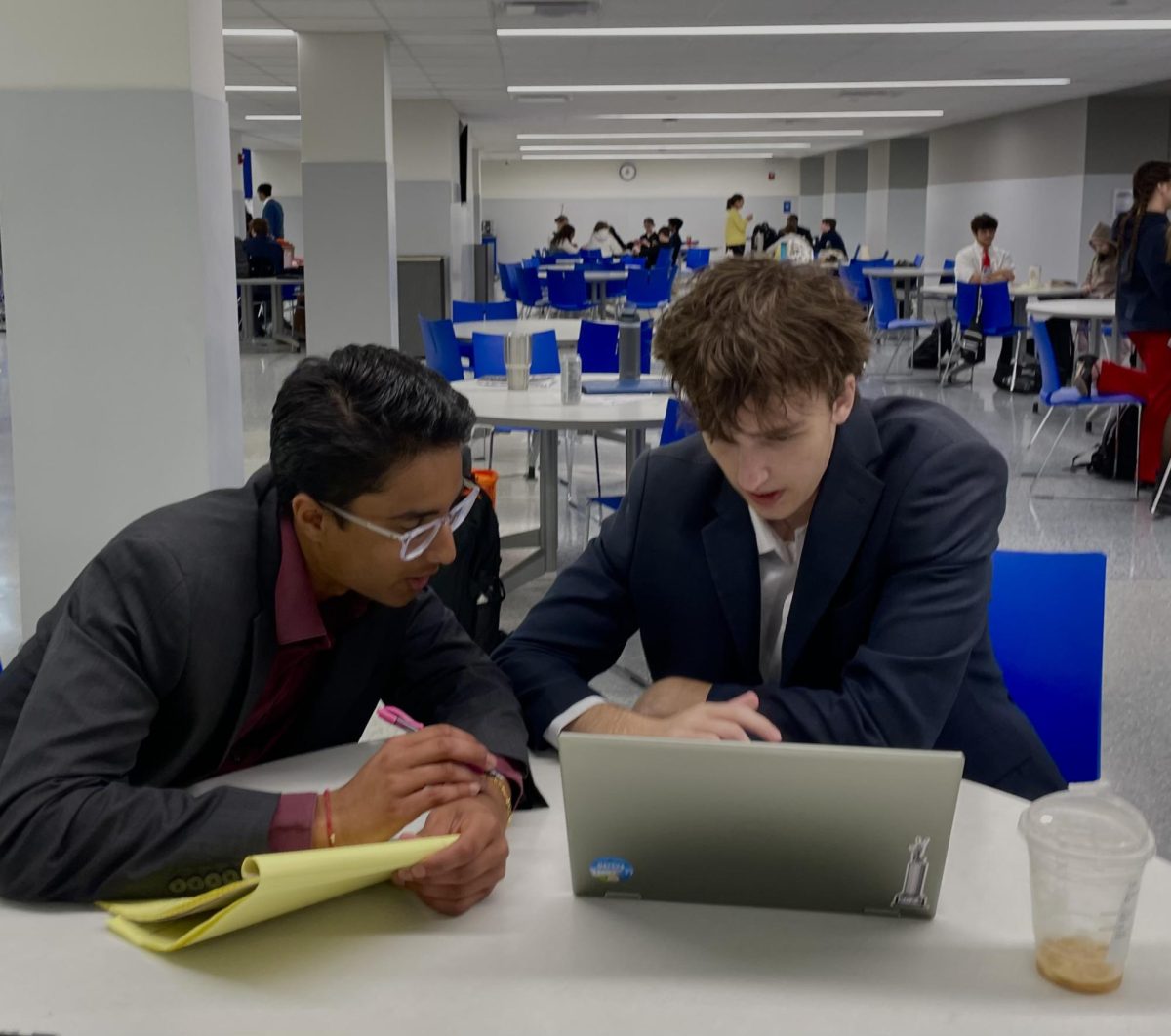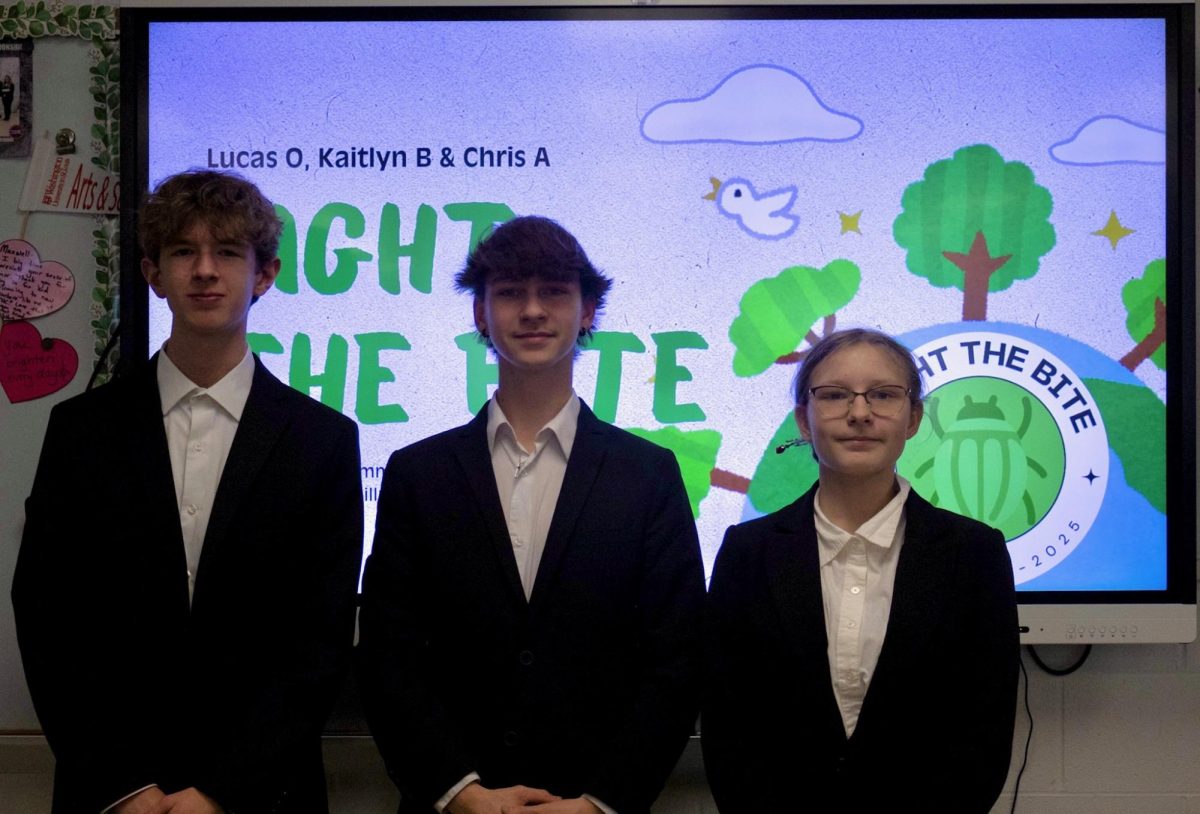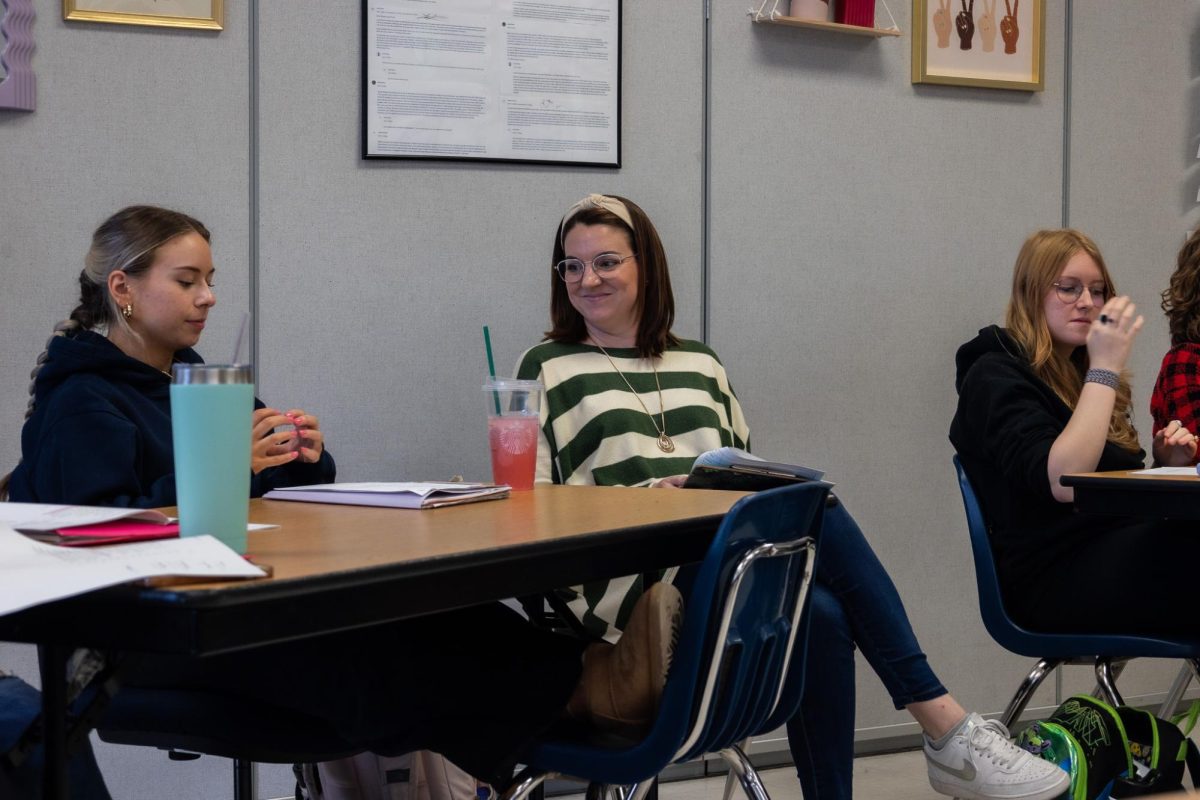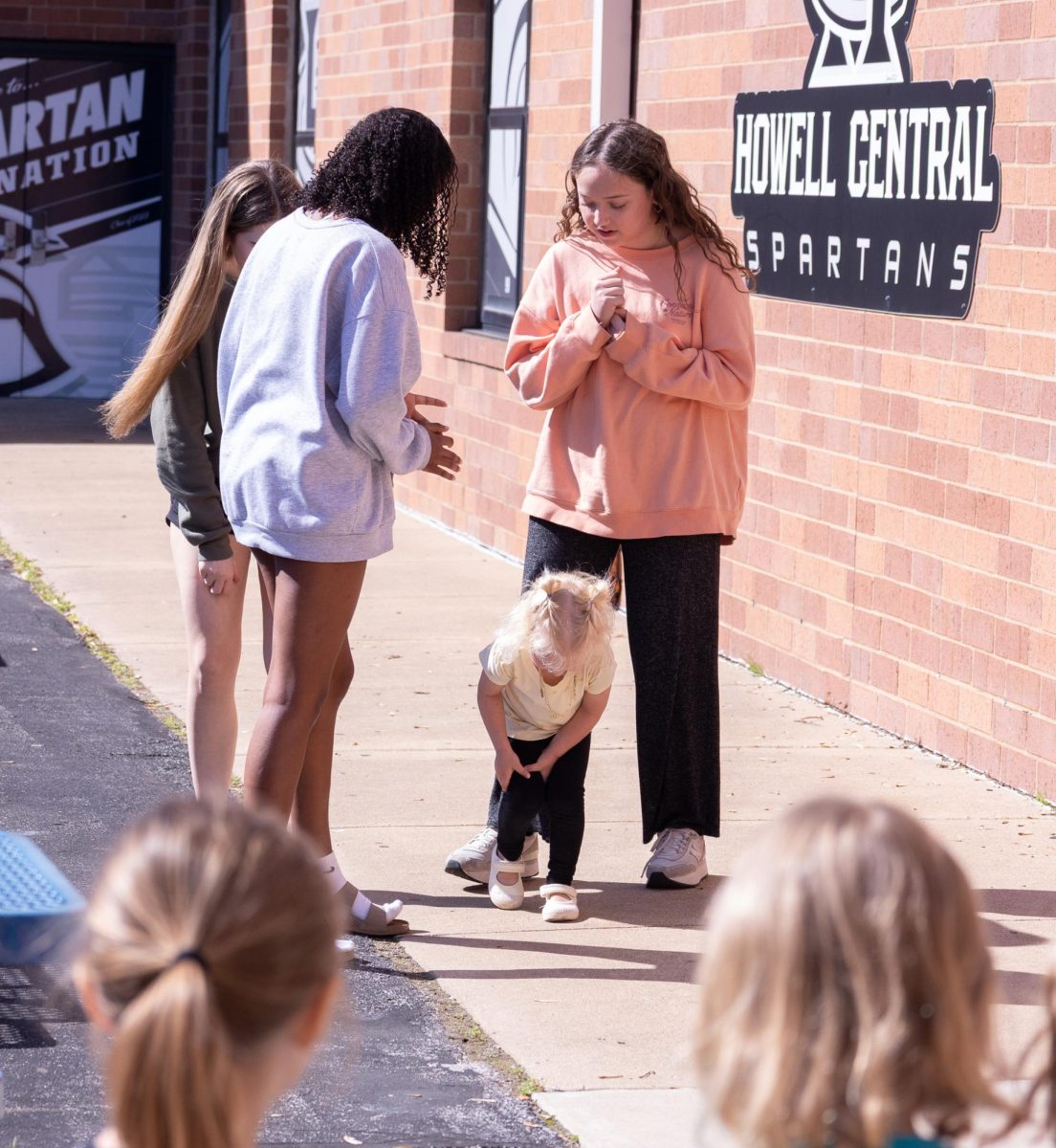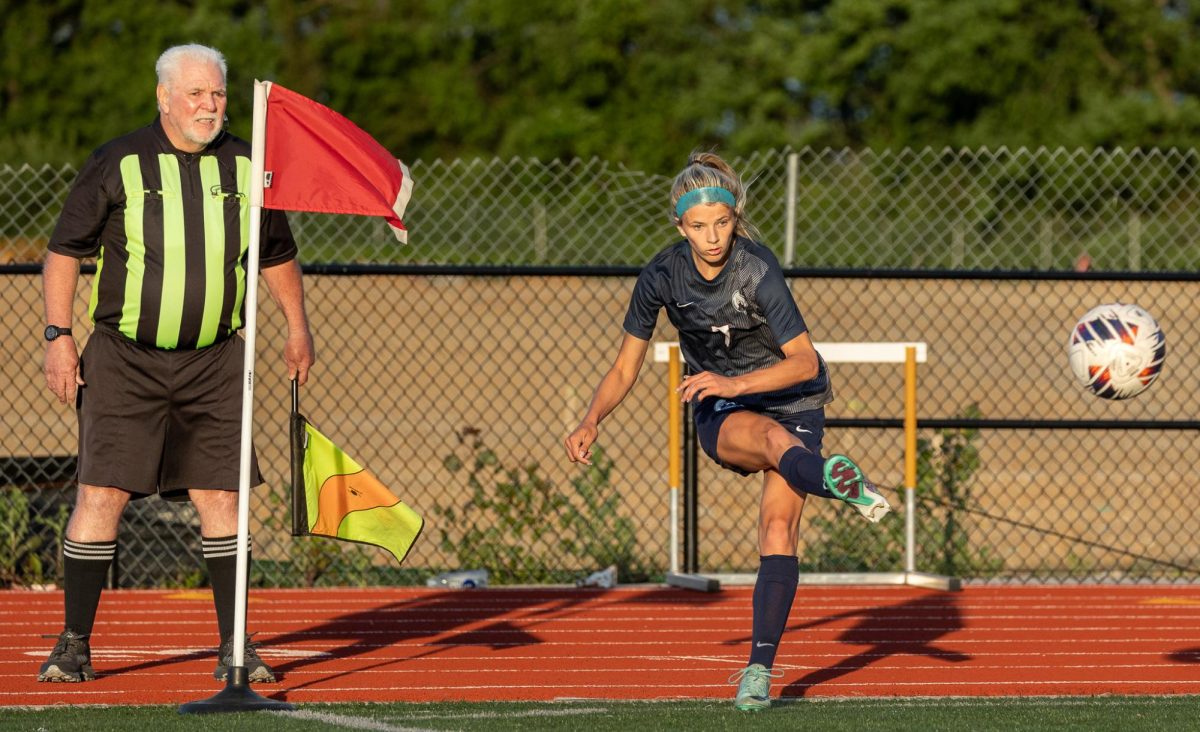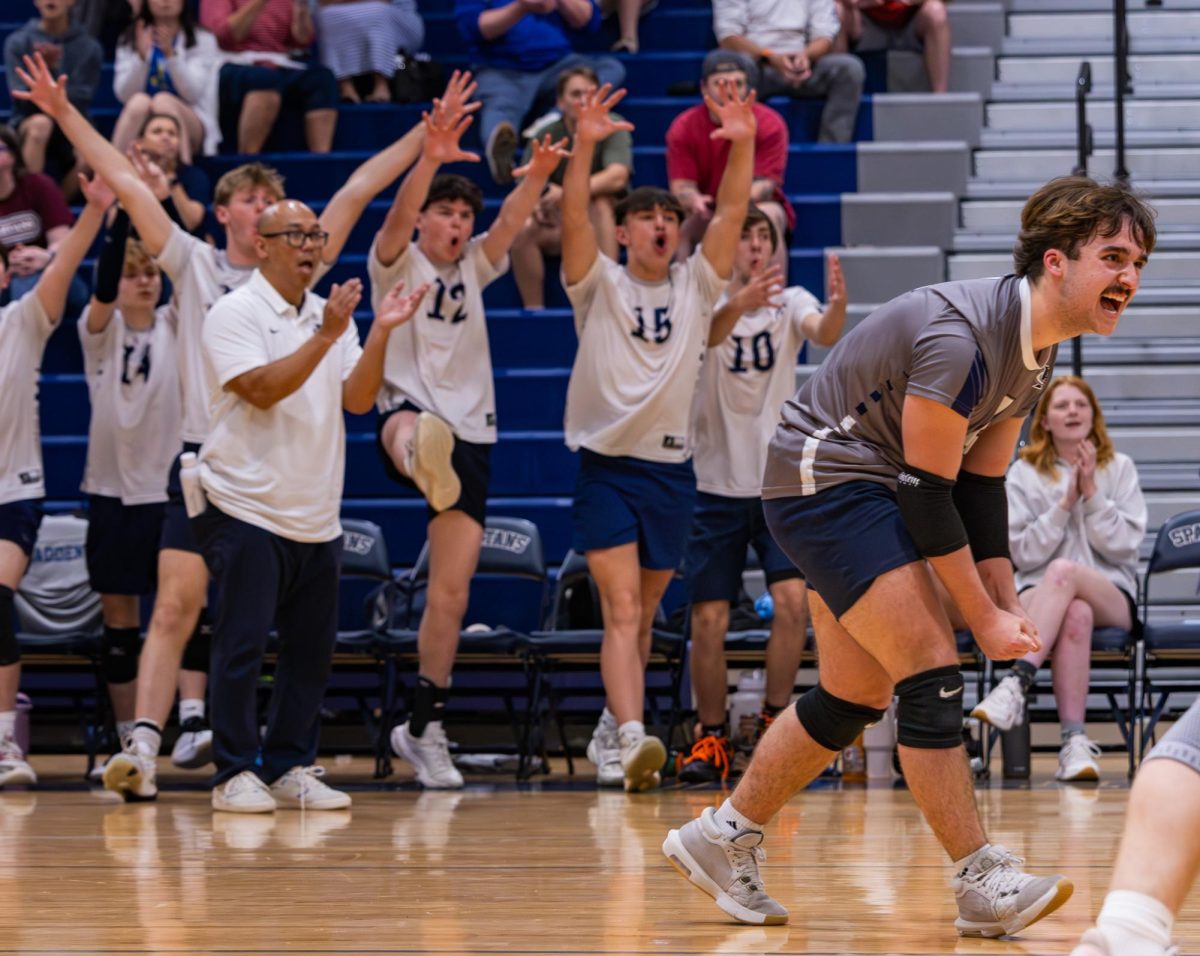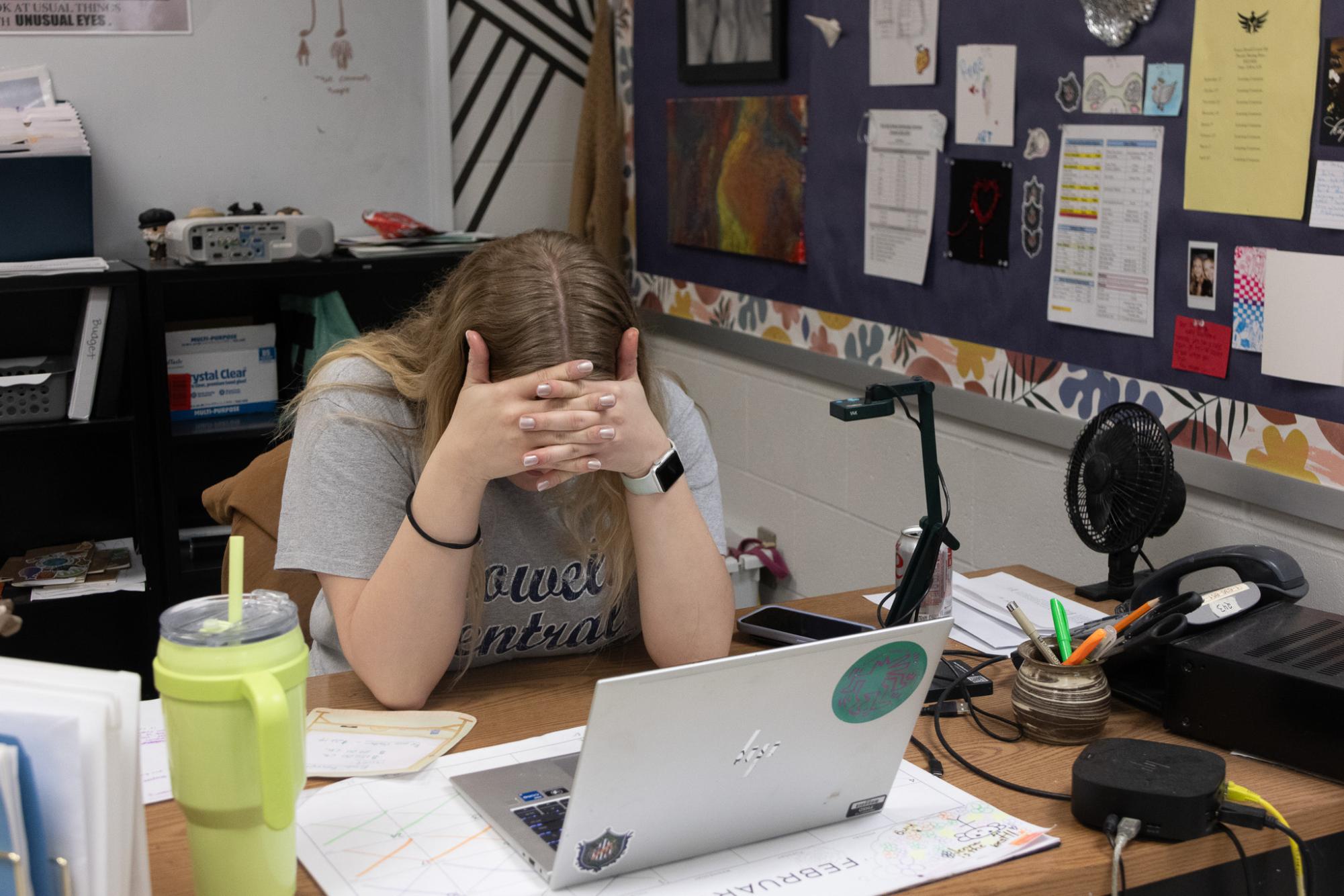
AMI and the Cyber Attack: The Complete Series
Mike Wondel, the lead pastor at Church of the Shepherd, ladles soup into the bowl of a young student. The young student smiles up at Wondel, happy to have a meal on a day that they normally would have gone hungry. Many families rely on schools to provide food for their children, so when FHSD had to have AMI (Alternative Methods of Instruction) school days due to a cyber attack, many were left without a meal. On Wed, Feb. 21, Church of the Shepherd invited all FHSD families without a lunch to eat at their church. In order to pull off this event, the administrators of this event had to think on their feet.
“Last week when FHSD canceled classes, we heard it was an unexpectedly stressful week for our students, staff, and faculty,” Wondel said. “We already had a lunch scheduled on Wednesday for the church, and someone thought we should invite students and their families to join us if they wanted to.”
Similarly, the St. Charles City-County libraries pitched in to support FHSD students during the unexpected cancellation. Diana Tucker, branch manager of the Kisker Road library, explained how the libraries helped support students by allowing them to print schoolwork for free.
“The library waived all printing fees for students and their families,” Tucker said. “As some of the course packets were pretty lengthy, printing fees could add up quickly, even at ten cents a page.”
Tucker, though unsure of exactly how many students took advantage of free printing, estimated that around 100 students and their families did. Wondel was also able to estimate how many people the church was able to reach with their kindness as he dove into the specifics of the lunch.
“We had four types of soup – chicken noodle, tomato, potato, and chicken tortilla – along with salad, chips and hot dogs. Some families chose to take the soups to go, while others ate lunch, played games, played on the playground and hung out at the church,” Wondel said. “We had about 40 students, plus parents, come for lunch.”
Wondel explained that Church of the Shepherd decided to open this lunch up to FHSD students simply because it was the right thing to do.
“When the school cancellation was announced, one of the Francis Howell School Board candidates called with the idea of offering lunch for students in the community,” Wondel said. “We thought it was a great idea, and it seems like the type of thing Jesus calls us to do.”
While the Church of the Shepherd welcomed new faces from the district, St. Charles City-County libraries aimed to grow an existing relationship with FHSD students.
“The library already has a partnership with the schools in the form of student library cards, and the library values this partnership as education is very important,” Tucker said. “By waiving printing fees and reminding everyone of the student library cards, the library was able to support the school and the students in this minor way, and hopefully strengthen our partnership with the school.”
Both the Church of the Shepherd and the library shared that their heart behind hosting these events was to alleviate the stress that AMI days brought upon many students and families.
“I hope we shared hope and kindness and had fun along the way,” Wondel said. “We are grateful for our FHSD leaders who helped spread the word.”
Tucker expressed a similar sentiment in her final comments.
“The library was able to help students and FHSD families by waiving fees that could have been cost prohibitive for students, and teachers as well,” Tucker said. “Hopefully waiving printing fees helped to alleviate a little bit of stress in an already stressful situation.”
Mrs. Sara Maxwell prepares herself for the unprecedented change in her day-to-day routine. A pile of papers, a manual sign-in sheet, and a Wi-Fi hotspot are all piled on her desk, following a district-wide cyberattack that had rendered the private network system shut down. Fortunately for Mrs. Maxwell, she arrives at the nurse’s office with the hotspot plugged in and the computer running. Schedules continue like any other day, at least for the school’s nurse.
On Feb. 19, FHSD announced that a cyberattack had been conducted against their private networks. The district had consequently shut down all online services until they could guarantee the security of students and staff at school.
The only difficulty that Maxwell faced, however, was connecting her computer to the hotspot, which was fixed by a single call to the office and turning off her ethernet cable. Luckily, Maxwell had no problems distributing medicine during the day, thanks to the efficient distribution of Wi-Fi hotspots and the planning of how to recreate the school day by the district.
“We had everything we needed, other than setting up the connection, that is. One call on the walkies and it was fixed though,” Maxwell said. “When we came back to school, students got their meds.”
The reason the medical department was able to run without interruptions was thanks to the meetings and planning that was done prior to returning to the building.
“Everything came together way quicker than I expected it to without the Wi-Fi,” Maxwell said. “We had a meeting before coming back to school to make sure everyone had everything we needed and make sure we were safe.”
Although Maxwell’s day ran smoothly, other areas of FHSD had still not returned to normal. To return students to school, the district had to prioritize the main securities, such as the nurse’s office.
The main reason for scheduling AMI days was not due to an inability to teach offline, but rather an inability to uphold a safe learning environment. Building Principal Suzanne Leake spoke about the importance of ensuring students’ safety as the district dealt with the absence of the Internet.
“The safety of students and staff was really prioritized,” Dr. Leake said. “Did we have a way to account for who was in the building? Did we have a way to know who was signed in or out? Did the fire alarms and other [security systems] run without the network?”
Once all these safety requirements were met, the district felt capable of returning to in-person instruction. This return wasn’t without complications though as all of the staff and students were unable to access their usual online lectures and courses when on school grounds.
One of the biggest challenges was finding a workaround for the app Infinite Campus, which had access to all of the student’s grades, attendance records, and personal information.
“A big problem was not knowing if [staff] would be able to get to Campus,” Dr. Leake said. “Even if they could get to campus, we knew they wouldn’t be able to print a roster from Campus.”
Dr. Leake and other district officials had to participate in multiple Zoom meetings over the two AMI days to figure out how in-person schooling could be conducted without certain resources.
To keep track of student attendance Dr. Leake and other administrators had to go through the tedious process of printing out a paper copy of every student’s schedule, as well as every teacher’s roster.
“We were going to every classroom, pulling the CF binder, pulling out the rosters, running copies of those, putting the originals back in the binder, and then we would run two copies for Thursday and Friday,” Dr. Leake said. “I also pulled myself a master set of copies so we wouldn’t have to go room-by-room again.”
Even though returning to school had quite a few downsides, it definitely proved to be necessary as multiple of the younger students’ parents were unable to help their children learn while working. Dr. Leake acknowledges the sudden announcement of AMI days could cause parents of younger children to have some difficulties.
“While AMI does have its benefits, it does put a family with young children in a pickle,” Dr. Leake said. “High school students can stay home by themselves but many elementary kids cannot as a lot of their parents are back at work.”
Throughout this past week students and staff have had to adapt to offline learning which up until Thur. Feb. 29, was the only option that would allow parents to send their kids back to school.
While all of these events were still going on, district officials were working with the FBI to investigate the details of the cyberattack. The investigation is still ongoing and Superintendent Dr. Kenneth Roumpos has sent out multiple emails as well as a video explaining the information that is currently known. Within these district-wide messages, Dr. Roumpos has made it clear that certain information will not be released until the FBI has finished conducting its search.
The very foundation of our day to day lives at school has been rattled by the variety of unprecedented changes being made in response to the new found lack of internet connectivity. Returning to school without a reliable source of internet access, has created much difficulty for the students, teachers, and administrators of our community. Many mundane and simple tasks have been changed in many significant ways, resulting in the slowing down of many essential services our building relies upon to function.
Much of our student population take part in blended learning courses. These courses grant the opportunity for students to spend time outside of their classrooms, presenting an opportunity to engage with college-like flexibility in their learning. Without the ability to sign in and out digitally, Senior Macy Perks has had to alter her daily routine in order to accommodate this.
“We can’t scan the QR codes on the back of the passes. So we have to paper sign in and out. And it takes a longer process. And in the mornings, I have to get here a couple more minutes early than I usually do. So I can wait in the line to sign the paper,” Perks said.
After a long morning of growing accustomed to an internet free school day, many students were shocked to see the impact this had on our very own lunchroom. Senior Faith Green grabbed her food, making her way to the lunch line, only to discover yet another change to her daily student experience.
“For the normal lunch process you just get food, get in line and punch in your lunch number and then you’re on your way. But with no internet, everything had to be done on paper, so it took a lot longer to get food and back to your table, which took away from how much time you actually had to eat,” Green said.
Over in the attendance office, the wifi connectivity issues generated an irksome amount of problems due to them being unable to access schedules, students signing in or out, and had to transfer nearly everything to paper. Mrs. [Suzanne] Channell has worked in the attendance office for the past 14 years and expresses her frustration with the newfound problems they have to face.
“We’re moving everything to paper, we’re collecting everything by paper and we can’t enter it because there’s nowhere to even enter anything yet. And that’s only the attendance half, that doesn’t even include field trips or Lewis and Clark. Basically we have everything written down on a paper somewhere, but we don’t have anywhere to put it,” Channell said. “When a parent comes to pick up a student, we have to check a paper to see if they’re on the list and then have to go to a seperate paper for their schedules, then a separate place to sign them out. It’s all just annoying.”
All of these little adjustments made to students’ regular day to day lives affected each and every one of us in a different way. Even though internet connectivity has returned as of February 29th, this entire experience has challenged our community in ways never seen before. In our slow yet steady return to normalcy, the resolve of us students, our talented educators, and our determined administrators, has proven effective. Although our future challenges remain uncertain, the grit of our community will continue to prevail.
On the evening of Feb. 19, as students began to prepare for the upcoming school week, parents and students received the email that there wouldn’t be school for the following two days, because of Wi-Fi issues. In place of that, students were required to take part in Alternative Methods of Instruction (AMI).
Principal Suzanne Leake sent a link to the students’ Canvas inbox that took them to a massive google Doc that had every teacher’s AMI learning plans on there. It was structured so that students could click on the link which would bring them to their assignments for each class. Teachers gave out Google forms, notes, videos or maybe just a simple note that implies that the students should know what is expected of them during these couple of days. The due dates for these assignments were often moved back towards the end of the week so in reality there were less than 100 kids on the hyperdoc.
These AMI learning days brought a vivid flashback of how it was like during COVID-19 remote learning. Students were able to sleep in and work on their assignments at their own pace, but obviously, there is a major difference as we are not quarantined anymore. Senior Emily Rehr used her time during the AMI days to relax, get her homework done and spend time doing the things she enjoys.
“I woke up at a comfortable time and I got myself ready, then I worked on my physics,” Rehr said. “I played some video games, and I went on a walk with my dog. [It was] very good and relaxing”.
AMI learning allows for students to use their time more productively because they are not constantly waiting for a bell to ring or for a teacher to begin class. All of their time is being used effectively for their work. As much as AMI learning seems better on paper, it can also serve some challenges. Junior Aadit Mehta prefers going to school in person rather than having AMI days even despite the extra time on his hands.
“I played tennis with my friends. [Both] days I went to the gym and went outside,” Mehta explained. “I was virtual my eighth grade year and you really miss that social context sometimes. I think school is nice, like hanging out with friends and stuff”.
Not only did the AMI days conflict with the social aspect, but they had also decreased the students’ ability to learn. Many students learn best with a hands-on learning teaching style. Freshman Lillian Richter shared how the AMI day went for her.
“I mean, for learning, we didn’t really learn anything new. It was just kind of reviewing and working on stuff we’ve been learning. So I think it was pretty effective for practicing”.
AMI learning days can be a wonderful way to still continue learning at a smaller pace, while also giving students a break from the school setting but should only be used as a last resort because in-person teaching is more effective.
It was President’s Day when teachers planning their schedules for the next day suddenly hit a major roadblock. An unprecedented cyber attack had thrown their plans for Tues Feb 20 and Wed Feb 21 off the rails, forcing them to resort to backup plans they never thought they would use for something other than snow days: AMI days.
On both days teachers had to publish assignments that could be completed virtually by students. Although the attack was sudden, it was nothing English teacher Teresa Odle was not prepared for, who was able to breeze through the two virtual school days.
“As a teacher, it was easy. All you had to do was post stuff and answer kids’ questions when they emailed or texted you,” said Mrs. Odle. “I was a little nervous about the schedule because I also have to make sure we are ready for the EOC test date.”
While many teachers were ready and on-top of things, there were several who had to adapt to the situation. Art teacher Ashley Runge, who is currently in her first year of teaching at FHC, noted how she had to get creative with the class schedule for the AMI days.
“I know that a lot of kids might not have available art materials at home, so I just told them to use whatever they have at home and make something out of it,” Ms. Runge said. “If all they had was a pencil and paper, then I told them to draw me something.”
In addition to all of the technological troubles came another app rendered unusable during the course of AMI days, and even an ongoing issue, Infinite Campus. Teachers like Science teacher Paul Young found it difficult to manage the classroom without the app to help him maintain control over grades and assignments alike.
“We didn’t have access to Infinite Campus in order to update grades, and the expectation of being at home and working was definitely tough,” Mr. Young said.
As for personal feelings of teachers who might have preferred the classroom structure the two days students learned within the confines of their home, next to all of them commented how although they were prepared to combat the issue, the situation would have changed drastically if the period of AMI days were extended.
“I don’t prefer AMI learning over in-class learning at all,” Mrs. Odle said. “From a teacher standpoint, we do a lot of assessment in terms of reading a student’s body language and facial expressions to determine areas of confusion, though on those AMI days we didn’t have that physical interaction.”
Since Feb. 20, Francis Howell School District has been experiencing a network outage. As a result of these issues, the school was forced to have students learn through AMI (Alternate Methods of Instruction) days. But how did this network issue affect FHC’s clubs and athletic programs?
The AMI days threw everyone through a loop, especially those in clubs in sports. Spring sports had issues arise with impact testing causing a delay in some tests and they had trouble due to the fact that records of players were now extremely difficult to view. Clubs were forced to meet over zoom and have practices at home. The Esports team were lucky enough to have their practices smoothly and successfully. Sophomore Declan Fowler, captain of the “Valorant” team explained what the team did for practice.
“For practice we conducted at home, luckily practice wasn’t that different as we are typically on computers but it did make giving criticism more difficult,” Fowler said
Sophomore Adeline Law who is on the speech and debate team explains how her club was affected. There was extra pressure as they had a tournament coming up. This competition won’t be directly affected as it is held outside of school however it made practicing for it so much more complicated than it should have been. As the team had to find a work around for not being in school and not having WiFi.
“Over the AMI days we had a Zoom meeting in place of our practice. We didn’t get to actually practice, instead we got everything squared away for our tournament this weekend,” Law said.
These AMI days changed the way these clubs had to meet and practice, but unfortunately it wasn’t over once we got back to school as the wifi was still out. So these clubs had to adapt again. The Esports teams rely on WiFi to play their matches so they needed to change how they did things completely.
“Since everyone had the capability to play at home we just played a game at home, however, some of our setups aren’t as good as they are at school, so that made things a little more difficult,” Fowler said.
This problem with the WiFi created a problem deeper than just not being able to play at school for the esports team. It forced changes and unfortunately for some, these changes were not welcome as home setups and WiFi may not be as good as the ones in the school. Speech and debate also had issues come from the problems with the WiFi. They need the internet to research before speeches and they use computers for their scripts. It also makes entries for tournaments much more difficult.
“We can’t finalize entries until we get home. We can’t send emails to check to make sure people can go to events, it just makes things way more complicated and difficult,” Law said.
Not having internet access at schools has made the lives of club members a lot harder, but it’s not just them. With spring sports right around the corner it has caused many complications. Activities Director Scott Harris explained these complications and what they did to work around these issues.
“We had to reschedule two of our Impact tests due to the AMI days luckily the majority of our kids had their tests done prior,” Harris said
The Impact testing of the students wasn’t affected all that much, thankfully many have already had this screening as it’s only required every two years. But this test wasn’t the only thing affected due to Infinite Campus being down; it made things way more difficult as student reports were not easily transferred to coaches.
“Instead of having these reports on Campus and being able to send them to the coaches we have to look through and let the coaches know if the student is eligible to play. We don’t want to make the coaches come down here and look through a 150-page packet to figure out if a student is eligible, instead we figure it out for them.” Harris said.
This whole debacle has created numerous problems for the start of spring sports, but they are trying to stay prepared in case something like this happens again.
“We are always looking for better options trying to streamline the process but this has caused us to pause and take a look at the situation and find what we can do better for kids, parents, coaches, and the office,” Harris said.
Your donation will support the student journalists of Francis Howell Central High School. Your contribution will allow us to purchase equipment and cover our annual website hosting costs. FHCToday.com and our subsequent publications are dedicated to the students by the students. We hope you consider donating to allow us to continue our mission of a connected and well-informed student body.














